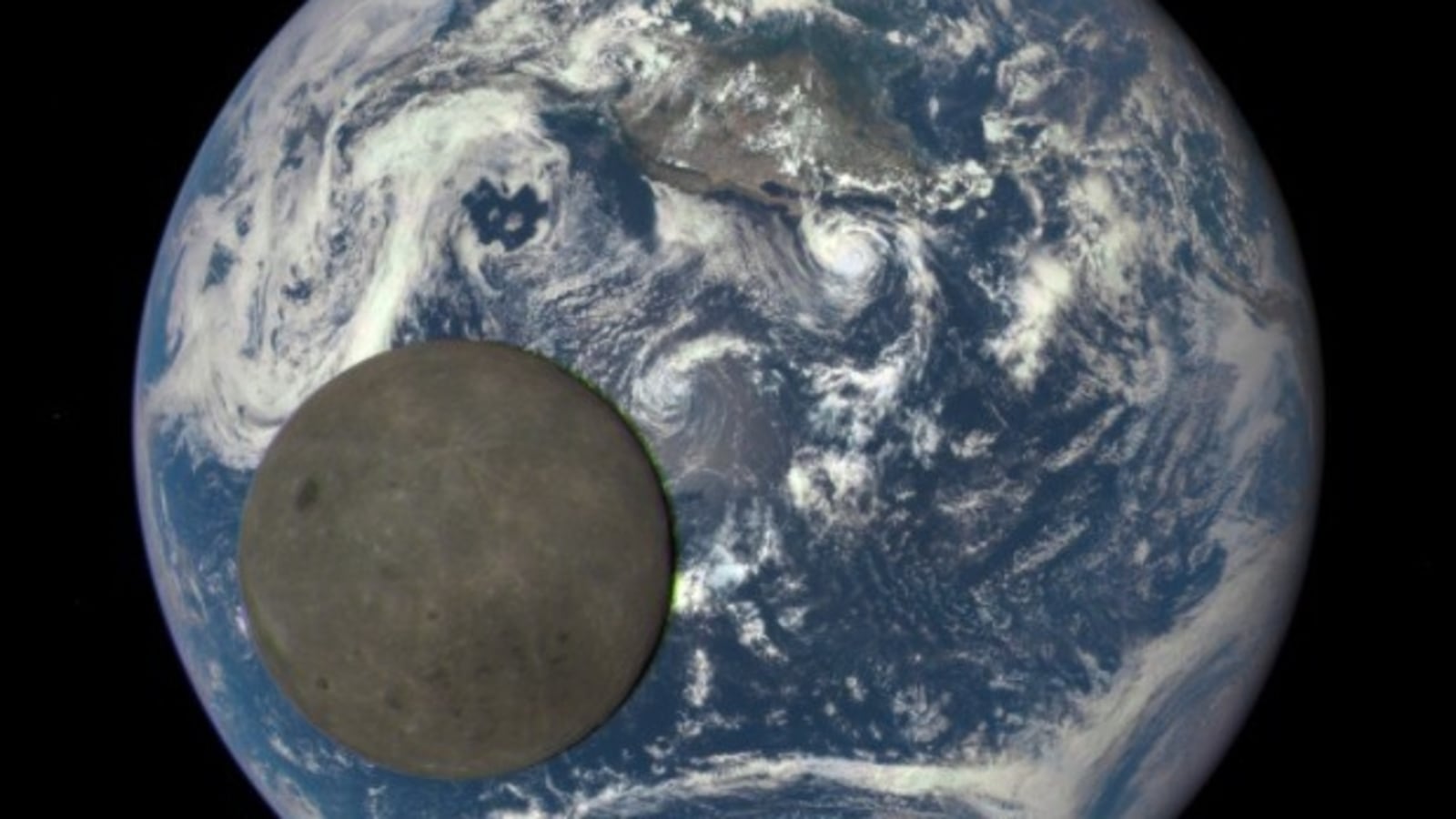Awesome! WATCH as NASA camera shows photo of Moon crossing the Earth
A NASA camera aboard DSCOVR satellite captured a unique view of the moon moving in front of the Earth!

A unique photo of the Moon moving in front of the sunlit side of Earth was captured by NASA and it is simply awesome. The combo photos actually show the Moon moving in its orbit with Earth in the background. What is more, the NASA camera took photos of the dark side of the Moon! ANother amazing thing is the Earth rotating in the background. NASA's Earth Polychromatic Imaging Camera (EPIC) took these wondrous images. The series of images displaying the fully illuminated 'dark side' of the moon that is never visible from Earth was shared by NASA Deep Space Climate Observatory (DSCOVR) satellite six years ago. Though the DSCOVR's primary mission is real-time solar wind monitoring for the National Oceanic and Atmospheric Administration (NOAA); the four-megapixel CCD camera and telescope EPIC on it maintains a constant view of the fully illuminated Earth as it rotates.
The dark side of the moon, also known as the far side, lacks the large, dark, basaltic plains, or maria. The far side of the moon is exposed to an equal amount of sunlight as the side facing Earth, however, it can't be viewed from Earth due to a phenomenon called tidal locking. It takes place when an astronomical body takes the same amount of time to complete a full rotation around its axis and fully orbit around its partner.
Adam Szabo, DSCOVR project scientist at NASA's Goddard Space Flight Center in Greenbelt, Maryland said, "It is surprising how much brighter Earth is than the moon."
What does EPIC do and how does it work?
EPIC captures the scientific observations of ozone, vegetation, cloud height and aerosols in the atmosphere. The camera provides a series of Earth images allowing study of daily variations over the entire globe. The camera captures the moon and Earth together as the orbit of DSCOVR crosses the orbital plane of the moon. It takes 13-22 images every day.
Sharing the images, NASA mentioned in one of its blog posts that these images were taken between 3:50 p.m. and 8:45 p.m. EDT on July 16, 2015 showing the moon moving over the Pacific Ocean near North America. NASA wrote, “The North Pole is in the upper left corner of the image, reflecting the orbital tilt of Earth from the vantage point of the spacecraft.”
EPIC generates the "natural color" images of Earth by combining three separate monochrome exposures taken in quick succession. It takes a series of 10 images using different narrowband spectral filters from ultraviolet to near infrared.
Catch all the Latest Tech News, Mobile News, Laptop News, Gaming news, Wearables News , How To News, also keep up with us on Whatsapp channel,Twitter, Facebook, Google News, and Instagram. For our latest videos, subscribe to our YouTube channel.





























